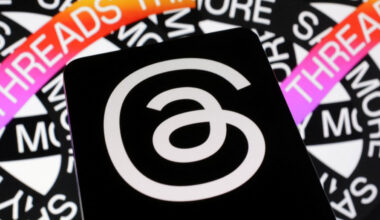A new survey of 586 bloggers and vloggers, examined the current state of influencers: their habits, attitudes, and blogging practices and how each shifted in the last year — from influencers becoming more professional to their ever growing relationship with PR.
Every year, blogging keeps gaining in popularity and, for this reason, influencer marketing is an essential tool for brands trying to push their products to consumers who are more and more skeptical of traditional marketing strategies.
The research, conducted by Vuelio and Canterbury Christ Church University, provides many valuable insights into how brands can understand and work in more effective ways with influential bloggers.
The success and ROI of influencer marketing are often hard to measure, but some studies have found that influencer marketing drives 11 times higher sales than more traditional forms of digital marketing.
Professional Blogging is on the Rise
The biggest change in blogging from the last year to this year is the increase of bloggers who are commercializing and monetizing their blogs. Although most (34%) still blog as a hobby, those who see it as their main source of income jumped from 8 percent to 12 percent and those who see blogging as their main source of income in the future rose from 13 percent to 18 percent.
Another clue that points to an upswing in professional blogging is the frequent interactions and negotiations between influencers and PR professionals. Most influencers (35%) say they are approached by brands 7 or more times a week.
Although influencers are being pitched to very often by PRs, the bulk of these influencer and brand interplays fail to produce any published content — 70 percent of bloggers reported that only one pitch or less a week actually produced any branded content on their blog.
The primary reason marketing influencers turned PR pitches down and didn’t turn them into posts on their blog is their personal opinion of the brand, coming in at 61 percent of respondents. The next highest is the potential interest of their audience in the given brand, at 24 percent.
The blog topics that received the most pitches were lifestyle, fashion and beauty, parenting/family, food, and travel.
In general, most bloggers still report having a good relationship with brands and PRs, up from 73 percent to 75 percent from last year. And on top of this, the bigger the audience a blogger has, the better their view is of PRs, which may be due to an increased reliance on PRs to help produce content for their blog, as professional bloggers with larger audiences post much more frequently than bloggers who do it as a hobby.
Compensation is a continuing roadblock in PR and influencer relationships. Most influencers (58%) feel that they should be paid for any brand mention whereas 71 percent of “PRs expect bloggers to support their brand for little in return,” both an increase from the previous year.
The number one roadblock cited by influencers when dealing with brands in 2017 was PRs failing to get details right and breakdowns in communication.
Credibility, Above All
There is ample evidence that two of the most valuable and cherished traits an influencer has is authenticity and transparency. Both of these are what builds an influencer’s credibility and trusted following that breeds successful influencer marketing.
The findings from the Vuelio study, are further evidence of this. As already mentioned above, most bloggers turned down pitches because of their and their audience’s potential opinion of a given brand. A hint that influencers understand the value of independence and credibility. This finding also probably means that many pitches are being declined because they are not personally targeted at suitable influencers but are, more likely, blanket pitches to many bloggers.
Over 80 percent of bloggers agree that any paid post or sponsorship of their blog should be disclosed to their audience in order to maintain transparency.
Even though bloggers place a very high value on their credibility, most believe that they lack the same credibility as traditional journalists. But over half of the surveyed bloggers (54%) feel like this will change and influencers will be more trusted than journalists in the future.
Blogging’s Changing Landscape
Over the last year, blogging demographics, habits, and topics changed in meaningful ways.
Unsurprisingly, the blogs that received the most pitches; lifestyle, fashion and beauty, parenting/family, food, and travel were also the most blogged about topics. But fashion and beauty took a huge hit from last year, dropping from 31 percent in 2016 (tied with lifestyle as the most blogged about) to 20 percent in 2017. One of the leading reasons for this shift is the migration of beauty and fashion bloggers to more visual mediums like Instagram and Pinterest to post their content.
Parenting/family saw the largest blogging gains from 16 percent to 31 percent, while lifestyle remained the top blogged about subject at 34 percent.
Men bloggers were much more likely to cover a vast range of topics compared to women, who primarily focused their blogs on lifestyle, fashion and beauty, and parenting/family.
Overall, bloggers are posting significantly fewer posts than in 2016 with much more adopting a one post per week strategy — up from 24 percent in 2016 to 38 percent in 2017. The one blog post per week preference held true across all categories except for lifestyle, which was most likely to publish three times a week, and parenting/family, which most likely posted four times a week. Influencers whose main source of income came from blogging posted many more posts than those who did it as a hobby.
When it comes to promoting their blogs, marketing influencers are still using the mainstays of social media to push their content. Twitter continues to be the main promotional tool for bloggers (94%) followed by Facebook (89%) and Instagram (79%). The biggest changes were Google+ falling from 57 percent to 44 percent and Bloglovin’s massive jump from 1 percent to 50 percent.



